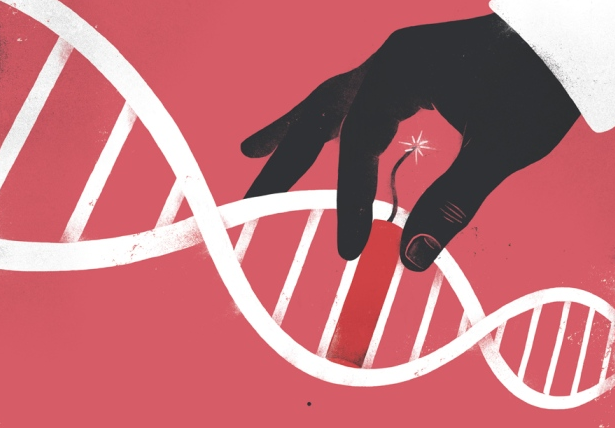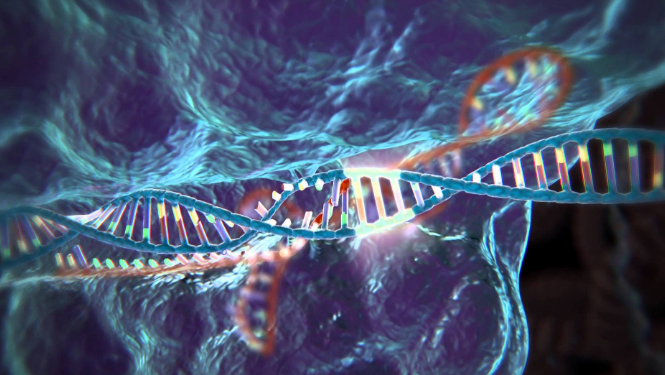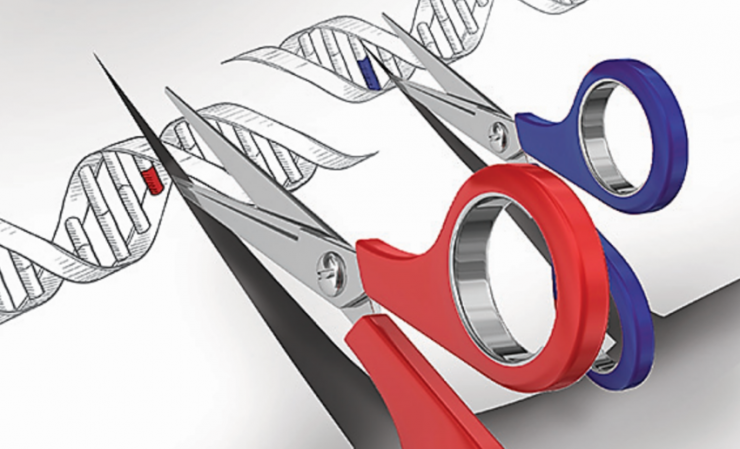
Sébastien Thibault/nature
Next month, the CRISPR–Cas9 gene editing technology will enter a new phase: the world’s first human CRISPR gene editing clinical trial is about to begin. As early as July 6, this clinical trial has been approved by the Hospital Ethics Review Committee.
The experiment was carried out by a native Chinese scientist who was an oncologist at the West China Hospital of Sichuan University.
According to Carl June, an immunotherapy researcher at the University of Pennsylvania, “This is an exciting step.†Many scientists, including June, are also conducting research on CRISPR–Cas9 technology. June is currently working on gene editing technology to help patients resist HIV tests, but is currently waiting for FDA clearance and is expected to begin by the end of the year.

Gizmodo
Lu Uran said in Nature's interview that the review took half a year, and manpower and material resources are also costly. According to him, the team will also advance this technology as soon as possible. From the uranium experience, he is also experienced in clinical trials of cancer patients.
According to statistics, Lu Uran graduated from the Department of Medicine of Luzhou Medical College in 1986 and obtained a bachelor degree in medicine. In 2000, he completed a master degree at West China Medical University. In October 2001 to October 2005, Dr. JM. Wilson at the University of Pennsylvania Medical School experimented. Room for postdoctoral work in gene therapy. Specializes in accurate three-dimensional radiotherapy for lung cancer, esophageal cancer and other chest tumors, radiotherapy comprehensive treatment and biological targeted therapy.
Lu Uran is also a scholar of his own works. He successively undertook scientific research on sub-subjects of the 863 project of the institute, department, and state, and participated in many national 973 and natural science fund projects. He is currently the national "Eleventh Five-Year Plan" 863 Plan humanity. Major disease gene therapy project leader. Responsible for 3 clinical trials of new drugs. Utility model patent invention (patent holder). A total of more than 50 articles have been published at home and abroad, of which 15 articles have been included in SCI.
At present, Chinese scientists pay close attention to CRISPR technology. Scientists engaged in related research have also achieved many results in recent years, such as:
In 2015, Professor Huang Junyi from Sun Yat-sen University and Prof. Zhou Canquan from the First Affiliated Hospital of Sun Yat-sen published the research results in the “Protein and Cell†magazine. He used the CRISPR/Cas9 system to transform the human embryo genome and triggered a series of ethics. debate.
In April of this year, researchers at Guangzhou Medical University used genetic editing techniques to modify human embryos to prevent HIV. This research result was published in the Journal of Assisted Reproduction and Genetics, because of the sensitivity of the disease and humans. Ethics raises discussion.
Lu uranium starts from lung cancer cells and is a relatively gentle way. As the first Chinese scientist to carry out a gene editing human clinical experiment, Lu Uran hopes that through this experiment, genetic editing can really be used by people. If the experiment is successful, I believe it is also an affirmation of the field of gene editing.
Chinese scientists are so concerned about CRISPR, and now they are starting to start the world's first human clinical trial, which is to the rhythm of heaven?

Popularmechanics
If you are still not familiar with CRISPR technology, welcome to review biology lessons first: High Energy Biology Lessons | What is CRISPR technology that can edit human DNA and RNA?
If you're a bit of a gossip, welcome to take a look at the patent battle for this technology: the genetic editing wars, only left one hurting each other?
Simply put, CRISPR technology can be understood as gene editing, which is to "modify" the gene of the wrong site in the genome and restore the normal function of human cells.
The uranium team will conduct experiments at West China Hospital. According to the plan, the team will recruit a group of patients with malignant non-small cell lung cancer. They have been proved to be ineffective in the course of chemotherapy, which is equivalent to "dead horses living horse medicine." Lu Uran said, "The currently available treatments are very limited, and gene editing technology can bring a glimmer of hope to patients."
According to Nature's introduction, the team will extract T cells (an immune cell) from patients, and then use the CRISPR–Cas9 gene editing technology to knock out specific genes. The gene-borne PD-1 protein can examine the cellular immune response and prevent healthy cells from being invaded.
After this, the researchers expanded the gene-edited cells and reinjected the cells into the patient's body, which could then circulate in the body and cure the cancer. Tang Lei, an oncologist at West China Hospital and a member of the Lu-Uran team, said that the clinical trial will be performed by Chengdu Messier Biotechnology to ensure that the gene has been successfully "edited."
The cooperation partner Chengdu Messier Biotechnology Co., Ltd., the website shows that this is a high-tech enterprise with international leading edge cell therapy technology research and development and service as its main business. The company's technical service program for tumor cell immunological biological therapy was named the "Top Ten Scientific and Technological Progress of 2013" by the "Science" magazine. The medium and long-term core development project targets the treatment of cancer stem cells and is currently a major strategic investment frontier in the international biomedical community.
According to Timothy Chan, a surgeon at the Memorial Sloan Kettering Cancer Center, the main problem with the original gene editing technology is the overreaction of cells. Because the technology will target T cells, it may lead to an excessive autoimmune response, causing the cells to begin attacking other normal tissues; the FDA has approved two antibody-based therapies to block PD-1, but the effect of the therapy last year More difficult to assess.
The uranium-based program is more likely to exert an effect on antibodies, and the goal of this experiment is lung cancer tumor tissue, which will extract specific T cells and, relatively speaking, it is less likely to cause autoimmune reactions.
According to Deng Lei, the team will try the above methods in phase I clinical trials and perform efficacy tests in three doses. At the same time, it is necessary to pay close attention to various physical indicators. If all goes well, the trial will start next month, let us wait for good news.